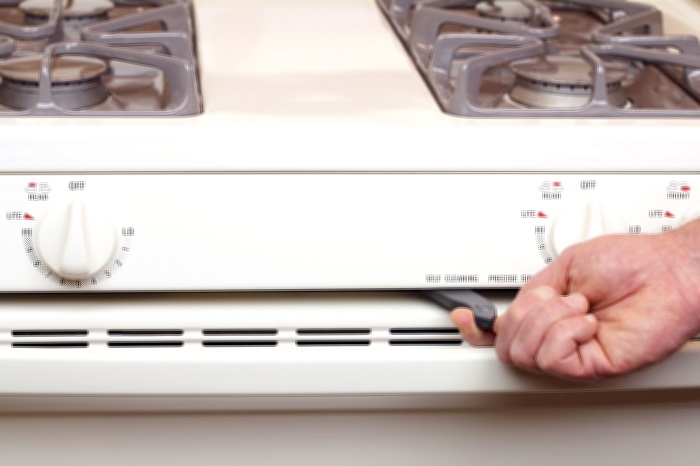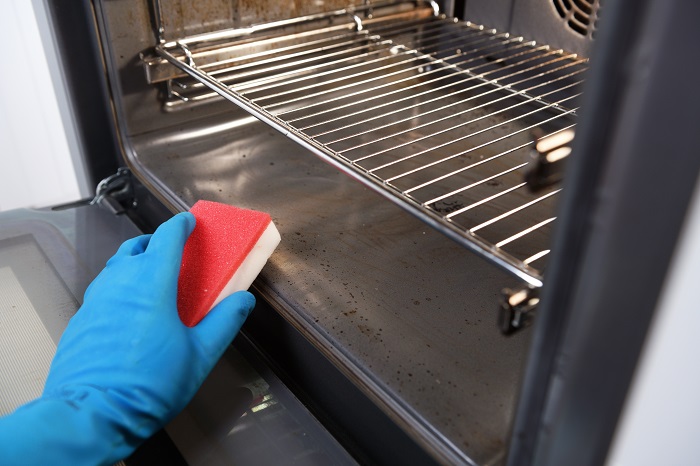It’s no secret that cleaning your oven is a pain. Thankfully, there is a way to avoid all the scrubbing and harsh chemicals. Most ovens being made today possess the self-cleaning feature. So what is it, how does it work, and is it a better alternative to cleaning your oven manually?
Let’s find out!
How Does it Work
When using the self-cleaning feature, the oven heats up to an extremely high temperature (between 880-900°F), which burns food residue and turns it to ash. After the oven has cooled off, you simply wipe out the ash. This cleaning cycle usually takes anywhere from 3-5 hours and then a few more hours so it can cool down. Watch our video to learn more.
What to Know Before Using Self-Cleaning

There are a few things you need to be aware of before starting a self-cleaning cycle. Remember that the oven is reaching an extremely high temperature. The heat will escape out and make the oven and the air surrounding the oven very hot. Make sure no children or pets touch the exterior of the oven during the self-cleaning or cool-down period.
Another thing to keep in mind is to only use the self-cleaning feature when necessary and never before a big event. If you overuse the self-cleaning it can cause damage to the oven and eventually break down. We have had many experiences with customers shopping for an oven the day before Thanksgiving because they used their self-cleaning feature and it ruined their oven.
Pros

The biggest pro is not having to clean your oven yourself! Now that you don’t have to clean it yourself, you can avoid using harsh chemicals on the inside of your oven, where they have the potential of mixing with your food. Since these ovens reach such high temperatures, they are very well insulated. This extra insulation helps save energy.
Cons
Even though the bulk of the work will be done for you, there is still a bit of cleaning that you’ll have to do yourself. You’ll want to remove any large chunks of food that could potentially catch fire and then you’ll have to wipe out the ashes once the cycle is done. The oven gets extremely hot which could lead to a warmer room. Someone could burn themselves on the exterior so it is very important to keep all children and pets away from the oven. If done too often, self-cleaning can lead to some electrical damage.
Avoid Hazards
There are some steps you can take to avoid damaging your oven. Remove all large chunks of food from inside the oven cavity before using the self-cleaning. Ensure the kitchen is well ventilated and a nearby fan is on. Only use the self-cleaning feature when necessary. Read the user’s manual before using the self-cleaning feature.

In Conclusion
Self-cleaning ovens help you avoid annoying manual cleaning. There are some things you must be aware of, but overall, it is a nice feature to have. What’s your experience using a self-cleaning oven?
